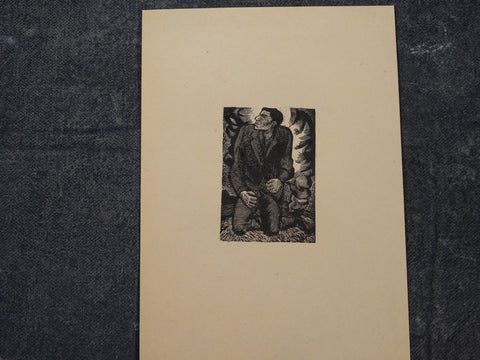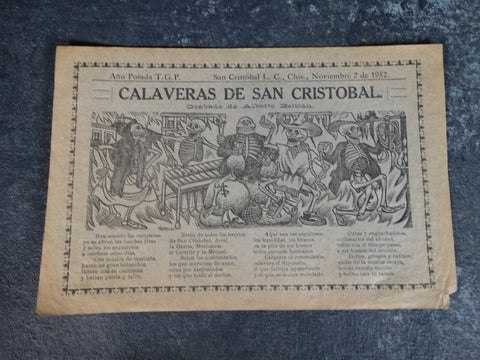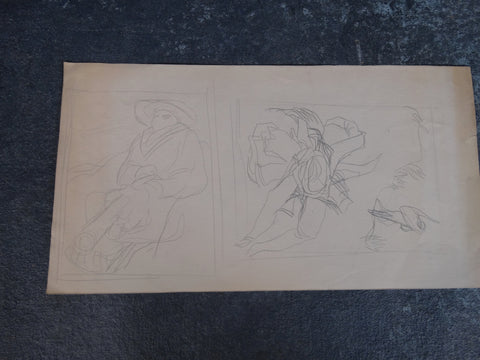Alberto Beltrán Portrait Of A Man: Enric Madriguera P2767
We have identified the sitter as the famous conductor and musician Enric Madriguera, whose career encompassed both classical and popular music. Definitely beat up as to its condition, but this is a masterly pen drawing and a truly penetrating portrait, and is of historical interest as well.
Measures 13 3/4" x 9 1/2".
Purchased from a Mexico City collector who acquired a trove of Alberto Beltrán's drawings and prints from the artist's estate. These pieces give us a wonderful insight into the process (and breadth of interests) of this hitherto somewhat neglected artist, whose work is only just now coming into prominence.
Alberto Beltrán García (born March 22, 1923, Mexico City, d. April 19, 2002, Mexico City) was a Mexican graphic artist and painter known principally for his work with publications such as illustrations and political cartoons but he created a number of murals as well. He was born in the rough neighborhood of Tepito and began drawing for local publishers when he was a teenager. He attended the Escuela Nacional de Artes Plásticas where one of his teachers introduced him to the Taller de Gráfica Popular where he began his career in earnest. From the late 1940s until his death, he work with various publications, mostly newspapers, but he also did book illustrations as well. In his later career, he worked on a number of murals, especially in the state of Veracruz, which he had an affinity for. Despite winning a number of important awards for his work, he is relatively unknown even in Mexico, with collections of his work scattered among a number of institutions.
Enric R. Madriguera (Barcelona, 17 February 1904 – 7 September 1973) was a violinist of Catalan origin who was playing concerts as a child before he studied at the Barcelona Conservatory. (The Castilian form of his name is Enrique, which he sometimes used on records.) Whilst still in his twenties he was lead violinist at Boston's and Symphony orchestras before becoming the conductor of the Cuban Philharmonic.
In the late 1920s Madriguera played in Ben Selvin's studio orchestra at Columbia Records in New York, and served briefly as that company's director of Latin music recording. In 1932 he began his own orchestra at the Biltmore Hotel, which recorded for Columbia until 1934. His music at this period was mostly Anglo-American dance or foxtrot, frequently jazz-inflected, although he had a modest hit with his rhumba rendition of Carioca (1934).
By the 1930s he was recording Latin American music almost exclusively. (His composition Adios became a national hit in 1931.) On his radio appearances, the band was billed as "Enric Madriguera and His Music of the Americas," and Adios was its theme song. It was said that the ambassadors from all the South American countries declared Madriguera to be the "Ambassador of Music to all the Americas". Madriguera appeared in a number of "musical shorts" including "Enric Madriguera and his Orchestra" (1946) where he performed a number of songs including the orchestra for his vocalist-wife Patricia Gilmore. A review of one of his appearances recorded how he "reflected the warmth of our neighbors to the south".
He died in retirement in Danbury, Connecticut. His sister was pianist Paquita Madriguera, the second wife of Andres Segovia.








